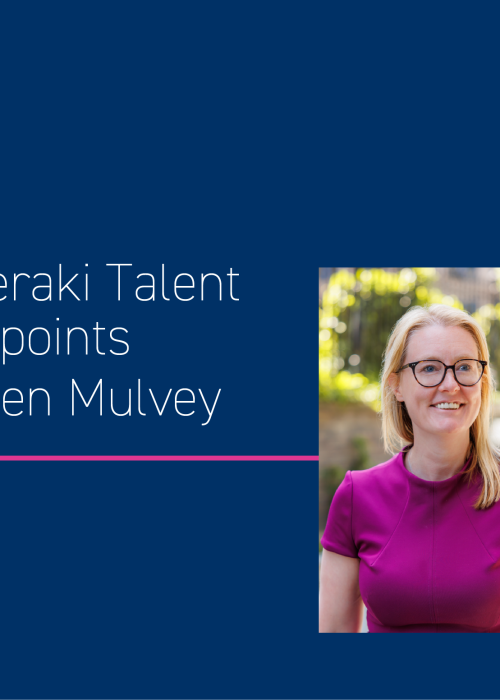
Five steps to creating a compelling candidate experience
| 08/03/2024
Delivering a compelling candidate experience isn’t just about filling roles; it’s about building lasting relationships. Candidates are putting their talents and career aspirations on the line, and hiring managers are investing considerable resources and time in the hopes of finding top talent. Candidates know that they don’t get a second chance to make a good first impression, but does your organisation know that how you treat candidates is as important?
Why is candidate experience important?
With Glassdoor reviews the norm, corporate reputation matters more than ever. The Talent Board, which runs the Candidate Experience Awards, surveyed job applicants about their experience. Of those who had a negative experience, 27 per cent would discourage colleagues from applying. The candidate's experience is crucial in attracting and retaining talent.
1: Address changing candidate expectations
Candidates' expectations have changed since the COVID-19 pandemic. They now prioritise areas such as workplace flexibility, job security, and meaningful work. Flexible working remains popular. Hiring managers need to adapt their recruitment strategies to accommodate remote work preferences. To attract top talent, highlight areas such as flexible working, meaningful work, and training opportunities in your job postings and interviews. Showcase your company's commitment to employee wellbeing and development, as these factors can be a big draw for candidates.
2: Application stage and job ads
Start the candidate experience with a simple application process that is not too lengthy. Provide a clear job description. A well-written and catchy description increases applications. Don’t list tasks and include benefits. Write the qualifications and experience clearly to help potential candidates identify if they are suitable. Gender Decoder is a free app to check for gender-coded words. Also, be mindful of the language used and ensure it doesn’t discriminate against experienced workers.
3: Accelerate the hiring process to secure top talent.
Being responsive and efficient can make your organisation more appealing than your competitors, who are also competing for talent. Can you reduce time to hire? Hiring cycles have extended in time. This is causing frustration with candidates who are finding the hiring process slow. The easiest way to miss out on talent is a drawn-out recruitment process that extends far longer than needed. If it extends longer than the market average, skilled professionals ready for a new role are unlikely to wait around.
4: Build your employer brand
Employers realise the importance of highlighting their company culture and benefits to attract top talent. Gone are the days of posting a job advert and hoping applications flood in. Nowadays, when a job seeker begins their job search, their online search queries might include: "Top companies to work for in 2024" or "Top companies in the UK tech industry." A corporate reputation matters more than ever. A survey conducted by Wonderful Workplaces showed that 94% of candidates consider an employer’s brand when applying for jobs.
Businesses that are better at employer branding are more likely to attract and retain top talent. Findings from LinkedIn show that companies with a great employer brand are seeing a 50% reduction in cost per hire as a good employer brand speeds up recruitment.
Everything from the salary and benefits package to training opportunities, remote working options, regular social events, the organisational culture, and the treatment of employees can impact the impression you’re trying to make on potential candidates.
Speak to the HR or marketing teams to ensure that the brand is being portrayed positively on social media and the website. Using imagery of current employees on your website is one example of a quick and easy change to improve the transparency and authenticity of your employer brand.
5:Communicate, follow up, and give feedback
Respond to all candidates, regardless of whether they get an interview or not. Far too many candidates go unanswered. According to findings from the company StartWire, 77% said they think less of companies that don’t respond to job applicants. With LinkedIn company reviews, candidates left hanging in the recruitment process are not shy about making their thoughts known.
Keep in touch with candidates or your recruitment consultant regularly, provide constructive feedback, and update them on the status of applications. Delays happen and decisions can be put on hold. If a candidate has been waiting longer than expected for feedback, sending a text or email can help alleviate any anxiety, letting them know that their application is still being considered.
Nothing gives recruiters a bad name more than ‘ghosting’ candidates post-interview stage so a candidate will realise that they have been rejected. Not only will it damage your employer brand, but it makes for a terrible candidate experience. Make sure you tell them why they didn’t get the job, what their weaknesses were and what they can do better or work towards next time. Most candidates welcome constructive feedback. Additionally, if relevant, employers should recommend another role within the company that could be a better fit.
As AI and automation work their way into the hiring process, it has never been more important for employers to build trust with candidates, and this needs to happen from their first interaction. By outlining a transparent recruitment process and sticking to it, employers will create a strong sense of certainty.
You can learn just as much from your candidate as they can you. Make sure you ask candidates or your recruitment agency how they felt about their experience. An open and honest relationship with your candidates will enable you to see how your employer brand is perceived. Negative candidate experience enables you to address the problem and try to solve it.


